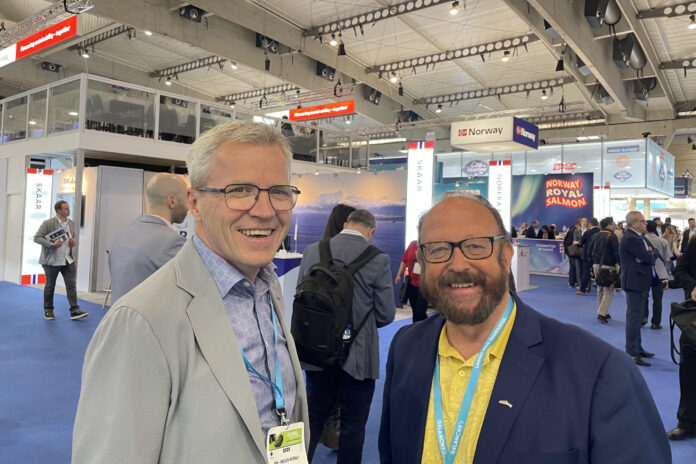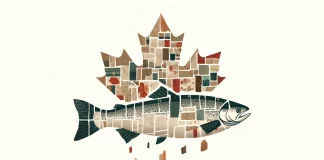It will be much more expensive to produce salmon in the future.
No cost component is more important for salmon producers than feed. And it is not getting cheaper. “Food inflation” is on everyone’s lips, especially at the large seafood fair in Barcelona.
“All raw materials rise in price. This is due to several things: logistics, energy prices and we know that there are large raw material producers, such as Russia and Ukraine, who have challenges in delivering. And with “challenges”, we know what it entails,” Carl-Erik Arnesen, head of the feed factory Polarfeed, which is owned by the Nordly group, said.
New and alternative raw materials, such as algae, larvae and insects, have, so far, proved very little used in salmon feed.
“It is very complicated. You must first breed a species, which must have a composition, which must make a raw material which in turn must be fed to a new species. It is complex, expensive and very small volumes,” Arnesen told SalmonBusiness.
Soy, rapeseed, grain products, vegetable oils, fishmeal and fish oil still control the market and are traded in large quantities.
“We need volume goods. And then one may have to start looking at GMOs, simply to saturate the world. But it is a process that the market must accept. It is the consumer who decides,” Arnesen remarked.
The rising raw material costs are being passed on directly to feed customers.
“Yes, of course. It does. Now the farmers get paid well for the salmon at the moment, but everything is driven upwards,” he said.
Prices for salmon feed are already at historically high levels.
“I would say between 12 and 15 kroner (€1.2-€1.5) a kilo, all depending on what content it has.
“How expensive could it be in half a year?”
“It’s impossible to say. But there are a number of people who talk about the feed price doubling,” Arnesen said.
“So, we could see over 20 kroner (€2) a kilo?”
“Yes. Then we can almost hope that raw materials will be available.”
“Is it more than the price that one should be worried about?”
“I think so, Arnesen said, before he added: “I filled the car with petrol on Sunday and then I paid 1,200 kroner (€122.50). That’s twice as much as I paid a year ago. It is only the wages that don’t rise,” he said.










